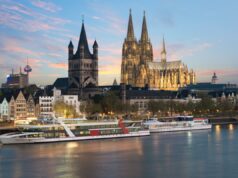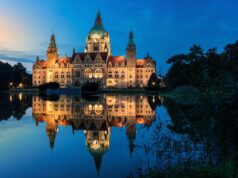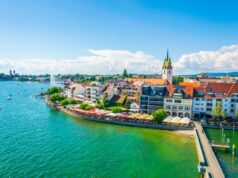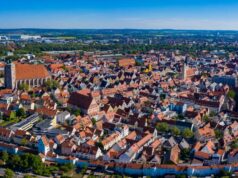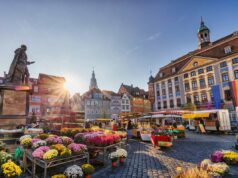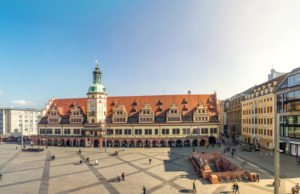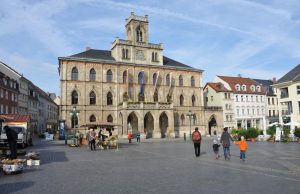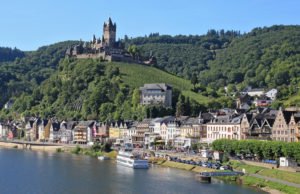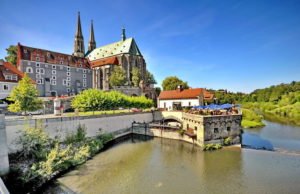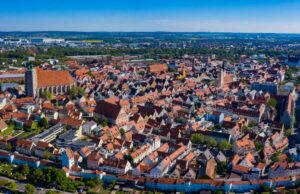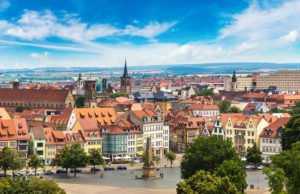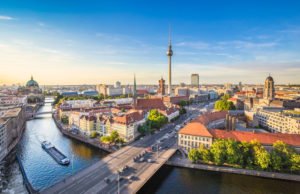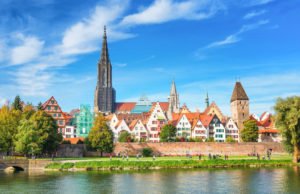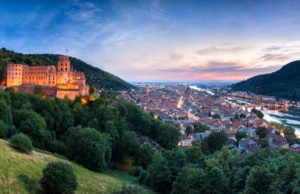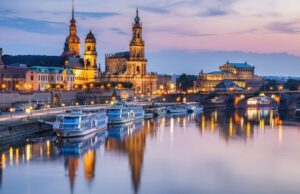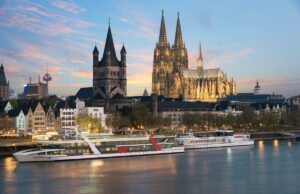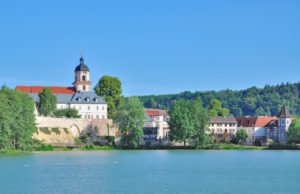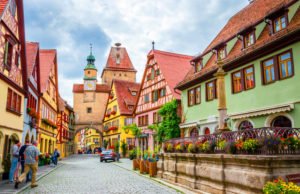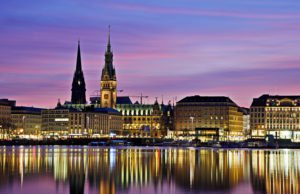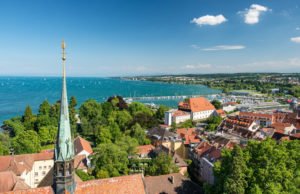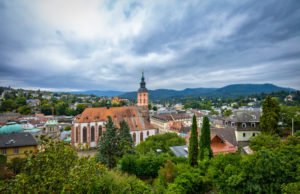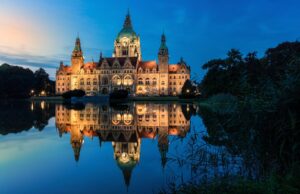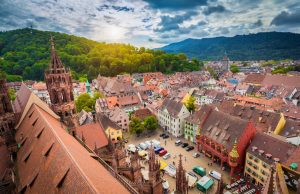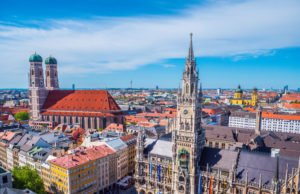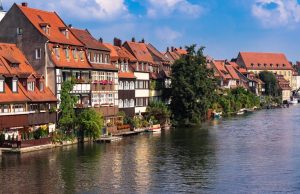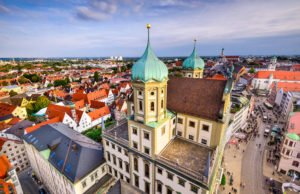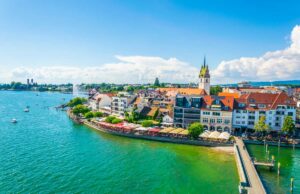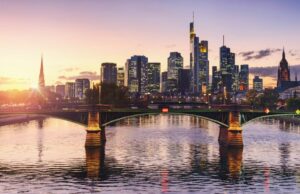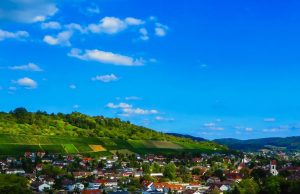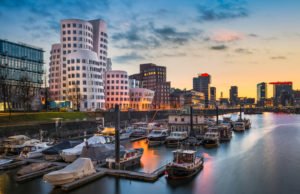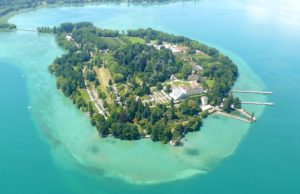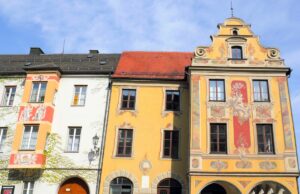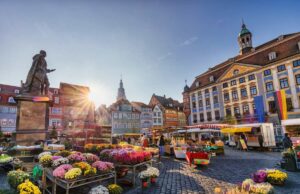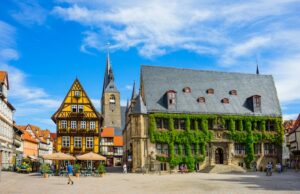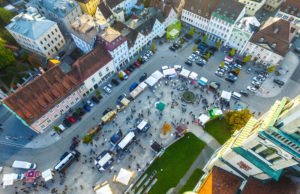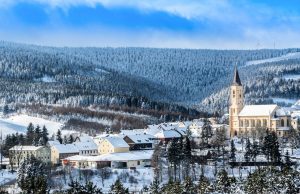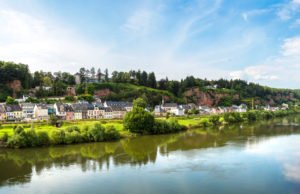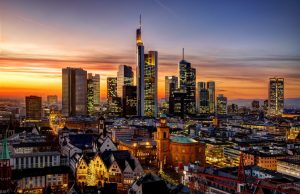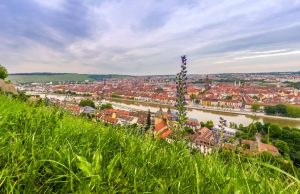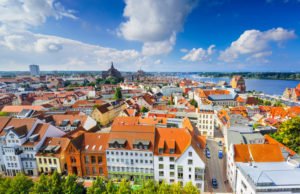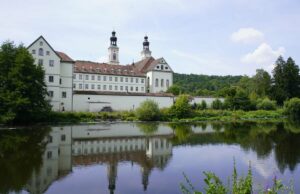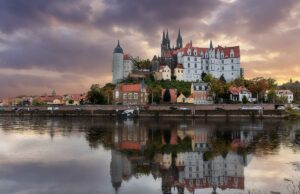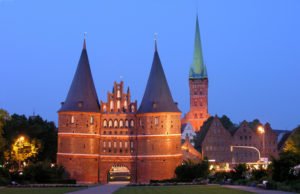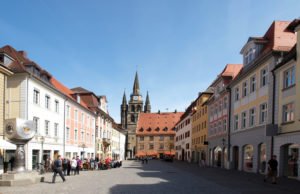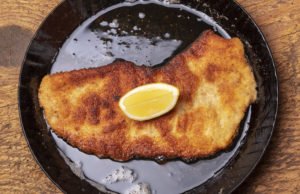Potsdam is the ancient capital of Brandenburg, and the former seat of Prussian Kings. Once a small town known only for its garrison, Potsdam was transformed by the influence of the Prussian royal family. It is now one of the finest royal cities in Europe, still dominated by the tastes of the 18th century monarchs who made it the city it is today. Potsdam is the Baroque jewel of Brandenburg, an often forgotten gem. It is a city built to be beautiful, and designed to remind its inhabitants of the links between man and nature. Interconnecting lakes and parks thread the city, and open green space is never far away. Potsdam is a wonderful destination for a holiday, or (at only 15 miles away from Berlin) a short trip.
What to See in Potsdam
1. Sanssouci Palace was the summer seat of the Prussian King Frederick the Great. He wanted a palace where he could relax and enjoy himself away from the rigours of court life. He had built for him a palace often compared to Versailles in its opulence and wonder. The palace is known for its Rococo style – indeed it is perhaps one of the best examples in the world of this style. The palace is one of the best in all of Germany and is visited by over 2 million people every year.

2. Sanssouci Park surrounds the palace and is perhaps equally as famous. A series of connected parks more than an enormous one, Sanssouci Park completes the largest UNESCO World Heritage Site in Germany. The park is filled with interconnecting lakes and gardens. It also includes restaurants and cafes.
3. Museum Barberini is one of the newest museums in Germany. Unlike most of the sites in Potsdam, the museum was only built in 2016. It focuses on art, from masterpieces of the old German Democratic Republic to older works, such as those of the Impressionists and the Old Masters.

4. The Neues Palais is not, as the name might suggest, all that new. It was constructed in 1769, by Frederick the Great. It is thought of as one of the best examples of Baroque architecture in the world, and is one of the last palaces built in this style anywhere in Europe.

5. The Dutch Quarter is a neighbourhood of Potsdam which collects 169 buildings built in the Dutch style. All are built from red brick and form a quaint and attractive area of the city.

6. The Old Market Square is the site of many of Potsdam’s most interesting and beautiful buildings. This is where the city used to be focused, with the Magnificent St. Nicholas’ Church a wonderful centre-point to the baroque architecture.

7. Bike Tours are an ever popular way of getting around the city and seeing all of the sites. As Potsdam was a purpose built city, it is quite geographically large. Walking between all of the sites can be tiring, so riding a bike between them is a popular idea.
Getting to Potsdam
As Potsdam is so close to one of the largest and most important cities in Europe, it is well served by transport links of all kinds. Reaching the city by air is easy if you make use of either of Berlin’s two airports.
Potsdam is served by Berlin’s S-Bahn public transport, and lies within fare zones A and B. From Berlin you can easily reach one of several stations within Potsdam, although the primary station within the city is the Central Station (Hauptbahnhof). Potsdam is also served well by road. It is on the A10, the Berliner Ring motorway, as well as several other major roads.
When to Go to Potsdam
Potsdam is in the North-East of Germany, and as such has a typical oceanic climate. This means that the winters are cold and snowy, while the summers are mild. The best time to visit Potsdam depends on what you want from your trip. If cold weather isn’t your thing, do not visit in the winter. However, if you don’t mind the cold and a bit of snow, the parks and palaces of Potsdam are a beautiful site in the snow.
Where to Stay in Potsdam
Potsdam is well served for hotels, hostels and guest houses. As one of the most impressive and beautiful tourist destinations in Germany, there are a wide range of places to stay, with options to suit all budgets and requirements.
One of the most popular options for those on a mid range budget is the NH Potsdam. Popular not just for its reasonable rates, this hotel is located in a wonderful area of the city, just outside of the Dutch Quarter. Rooms start at around £70 per night, although they can often be found for less online.
The Hotel Villa Monte Vino is a little more expensive, at around £100 a night. However, it is located near to the Sanssouci Palace and Park, with luxury rooms. The hotel is small and unique, although the rooms are all large and spacious. It is a family run hotel with the excellent customer service you would expect from a family business.
The Wyndham Garden Potsdam is one of the more budget-friendly hotels on the list, averaging out at around £60 a night. It is located at the end of the Sanssouci Park, towards the edge of the city. It would be an excellent choice for guests who want to explore the park on foot, or those who want to stretch their money a little further.
What to Eat
As the capital of the state of Brandenburg, Potsdam is an excellent place to taste the specialities of the region. Brandenburg is often thought to have the most down-to-earth cuisine of any German state. This is not meant to be a criticism – Brandenburg’s food has a sense of warm homeliness and comfort that few places can compete with.
Because of the many lakes in Potsdam (and all across Brandenburg), one of the specialities of the region is fish. Fish that seem unusual to foreign tastes are very popular in Brandenburg – the Pike, Carp, Zander and Eel are ubiquitous in Potsdam’s restaurants. All are frequently eaten with Spreewaldsauce – a thick roux based sauce similar to the French Bechamel.

The Drachenhaus is a restaurant and cafe in the Sanssouci Park, between the Orangery and the Belvedere. The restaurant specialises exclusively in regional produce, and produces only fresh dishes. The Drachenhaus also offers unforgettable dining experiences, such as ‘The Dinner Among the Stars’, a candlelit dinner where many of the dishes are prepared at your table. There are also regular events such as the all you can eat Scampi festival, or the open kitchen parties.
Specker’s Landhaus is a wonderfully restored country house, with an excellent restaurant which offers many local specialities. The restaurant is famous for its beautiful grounds and relaxed atmosphere, along with its deliciously prepared specialities, such as Turbot Fillet, or the local delicacy of Hay Cooked Lamb.
Getting Out and About
Potsdam is a fascinating destination in its own right, but sometimes it is good to get away from the city, and visit somewhere else. Fortunately, Potsdam is near to many other places of interest.
Berlin is only 15 miles away, and as one of the largest and most cosmopolitan cities in Europe, there are hundreds of things to do here. Visit the Reichstag or the Brandenburg Gate. Explore the history of wartime Berlin, or visit the site of the former Berlin Wall. Berlin is one of the cultural capitals of Germany and full of exciting things to do.
Brandenburg an der Havel is nearby town which gave its name to the now much larger state of Brandenburg. It is a historic town, full of fascinating architecture and ancient sites. Visit the Cathedral Island and see the ancient medieval Cathedral of Saints Peter and Paul. Marvel at the German Gothic architecture, and the remains of the medieval city wall.
Szczecin is a little further to go, but worth the journey. As Brandenburg borders Poland, consider a trip of two hours or so over the border into the ancient city of Szczecin. The city is one of the greatest examples of a Hanseatic City, and is filled with the remnants of its seafaring past. There are dozens of sites, from historic wonders to modern art galleries.


